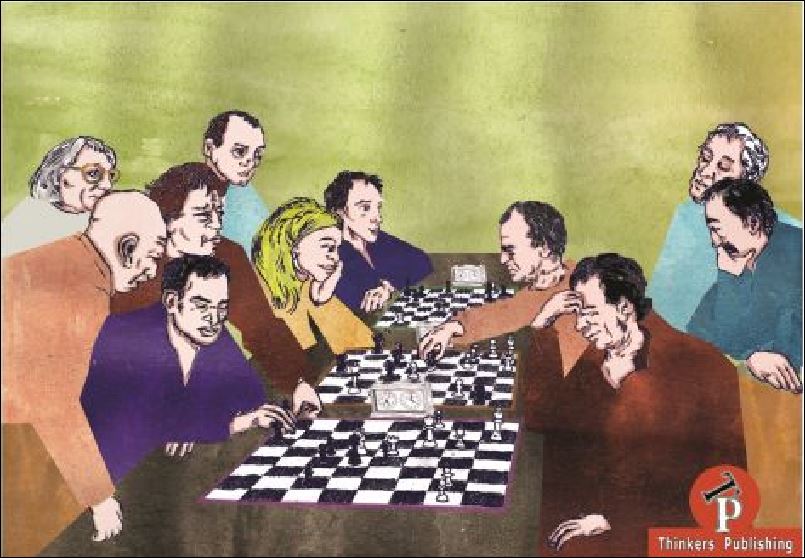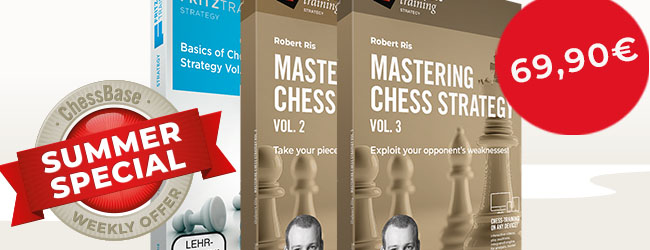A review
Thinkers Publishing 2018 — 239 pages
There are some books which excite me! This is one of them. Why? Because over the years, I had the pleasure to listen to IM Ris in few Chessbase DVDs. Two, in particular, come to mind: Calculation training, one of the most important skills for a chess player, and The Chess Player’s Mating Guide Vol. 1: The King in the Centre.
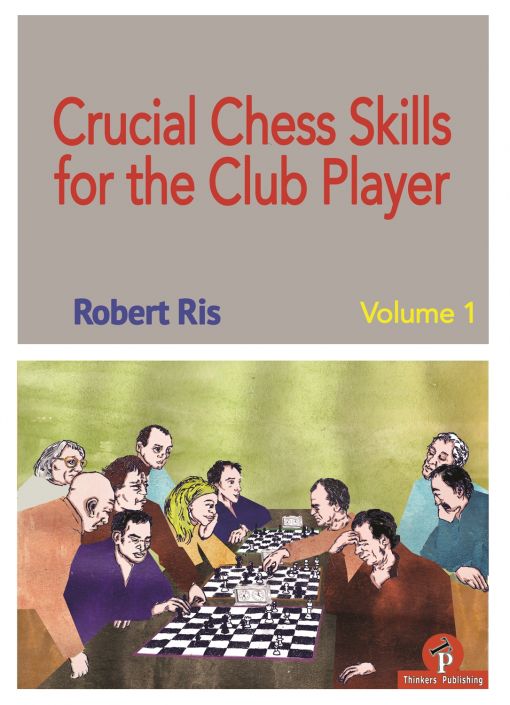
Knowing he is a great coach with many talented youngsters under his guidance, I wanted the chance to acquire a book written by him, to see what I can learn. The material one will find in this book is targeting ambitious amateurs who want to improve. Ideally, their range goes from 1500 to 2200.
The book is divided into nine chapters. The first four chapters deal with endgames. Ris is clear on what he believes as coach. In fact, he expressed it quite well in the preface. Ris writes:
I believe that every player needs to possess the knowledge of some elementary positions. This essential knowledge not only enriches your understanding of the game, but also gives confidence playing endgames in general.
I do agree to a certain extent that one needs some basic theoretical knowledge, but I also believe there should be a set of 100 endgames or more, one should practice over and over, till mastered.
There are two ways one could use this book. First, once one has studied the first four chapters, one could insert the positions into a chess engine like Komodo or Fritz, and play those positions against the engine.
In computer chess there is no getting past Komodo, a two-time ICGA Computer World Chess Champion. Find out how Komodo can take your game to the next level!
Why do I recommend such pragmatic approach? Because often when I read something from a book everything seems clear at first, then when I try to put it in practice in my games, nothing works as planned. One thing is for sure, just reading will not help you achieve mastery over the topic. The good thing about these four chapters is that all the endgames used as examples are taken from real games.
Often one should be skeptical if the knowledge of these common endgames will ever be applied in a tournament game. But seeing example after example in the practice of GM level players, definitely proved one must study them to reach the next rung of the chess ladder.
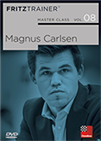 Scarcely any world champion has managed to captivate chess lovers to the extent Carlsen has. The enormously talented Norwegian hasn't been systematically trained within the structures of a major chess-playing nation such as Russia, the Ukraine or China.
Scarcely any world champion has managed to captivate chess lovers to the extent Carlsen has. The enormously talented Norwegian hasn't been systematically trained within the structures of a major chess-playing nation such as Russia, the Ukraine or China.
You better!
Once a year Magnus Carlsen gives a simul to those who play his app. A couple of years ago I watched the video, and when he talked for few minutes with the participants he asked them some questions. One I remember was to a young girl. He asked her if she knew the Lucena (or maybe Vancura, don't remember precisely) position. The point is the following: in my opinion, he was testing the participants, to know how strong they were.
If you read this book at the end you will know, thanks to the first chapter, what Philidor, Lucena, and Vancura positions are, and to Carlsen, you will answer: "Yeah a type of pizza..." so you have an advantage he doesn't know you know! After all, chess is a sport, but also a psychological game to play against your opponent, like a cat with a mouse.
The following is an example of a Lucena position. Try to play it against the computer, and then when you buy the book, you'll learn how to win, and see several examples from tournament games in which it happened:
You can play out the position directly on the diagram!
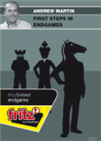 If you want to become a strong player you have to study the endgame. That's just the way it is. Andrew Martin's DVD 'First Steps in Endgames' offers a superb introduction for players rated below 1600.
If you want to become a strong player you have to study the endgame. That's just the way it is. Andrew Martin's DVD 'First Steps in Endgames' offers a superb introduction for players rated below 1600.Here is also a Lucena position, but this time is Black's turn, and Black can draw. Again discover it thanks to training against an engine or a human sparring partner:
Can you draw this ending?
This is an endgame which, in the beginning, I found difficult but quite useful if one wants to improve. I don't give solutions, because that wouldn't help one to understand how to play when needed the most: in a tournament game! The idea is to practice and struggle. Ris book is definitely the way to go, in order to learn these "crucial" endgame skills!
I'd like to show you one Lucena position coming from the book. The commentary begins on move 62. Ris in the book forgot to say that both players were playing blindfold! Yes pretty amazing to see someone winning with the Lucena position, without seeing the board and pieces!
| Replay and check the LiveBook here |
Please, wait...
1.e4 e5 2.Nf3 Nc6 3.Bb5 Nf6 4.0-0 Nxe4 5.d4 Nd6 6.Bxc6 dxc6 7.dxe5 Nf5 8.Qxd8+ Kxd8 9.Nc3 h6 10.Rd1+ Ke8 11.Ne2 Ne7 12.b3 Bg4 13.Bb2 Rd8 14.c4 Ng6 15.h3 Bxf3 16.gxf3 Be7 17.f4 Nh4 18.Ng3 g6 19.Kf1 Rf8 20.Ne4 Rd7 21.a4 Kd8 22.Bd4 b6 23.a5 Kc8 24.axb6 axb6 25.Be3 Rxd1+ 26.Rxd1 Rd8 27.Ra1 Rd3 28.Rb1 Rd8 29.Ke2 Kd7 30.f5 Nxf5 31.Ra1 Ke6 32.f4 f6 33.Ra7 Rc8 34.exf6 Bxf6 35.Nxf6 Kxf6 36.Bf2 c5 37.Kf3 Ke6 38.Ke4 Re8 39.Kd3 Rd8+ 40.Ke2 Kd6 41.Ra1 Kc6 42.Rg1 Rd6 43.Rg2 Kd7 44.Rg1 Ke7 45.Ra1 Kd7 46.Rg1 Nd4+ 47.Bxd4 cxd4 48.b4 Re6+ 49.Kd2 Kd6 50.h4 c5 51.bxc5+ Kxc5 52.Kd3 Re3+ 53.Kd2 Rh3 54.Rxg6 Rxh4 55.Kd3 Rxf4 56.Rxh6 Rf3+ 57.Kd2 Rc3 58.Rh8 Kxc4 59.Rc8+ Kb4 60.Rd8 b5 61.Rxd4+ Kb3 62.Rd7 b4 63.Rb7 Ka3 64.Ra7+ 64.Rb8 Rc7 64...Kb2 65.Rb7 b3 66.Rb8 Rc7 67.Rd8 67.Rb6 Rd7+ 67...Kb1 68.Rb8 b2 68...Rd7+? 69.Kc3 69.Ra8 69.Rb6 Ra7! 70.Rb8 Ka1 71.Kc2 Rc7+ 69...Rd7+! 70.Ke2 70.Kc3 Kc1! 70...Rd5! 70...Kc2 71.Rc8+ Kb3 72.Rb8+ Kc3 73.Rc8+ Kb4 74.Rb8+ Ka3 75.Ra8+ Kb3 76.Rb8+ Ka2 77.Ra8+ Kb1 78.Rb8 71.Ra7 71.Rb8 Kc2 72.Rc8+ Kb3 73.Rb8+ Kc3 74.Rc8+ Kb4! 75.Rb8+ Rb5 71...Kc2 72.Rc7+ Kb3 73.Rb7+ Ka3 74.Ke3 74.Rb8 Rd4 74...Ra5 74...Rd1? 75.Ra7+ Kb4 76.Rb7+ Kc3 77.Rc7+ Kb3 78.Rb7+ Kc2 79.Rc7+ Kb1 75.-- 75.Kd2 Ka2 76.Kc2 Rc5+ 77.Kd2 b1Q 78.Ra7+ Kb2 79.Rb7+ Ka1! 80.Ra7+ Qa2+ 0–1 - Start an analysis engine:
- Try maximizing the board:
- Use the four cursor keys to replay the game. Make moves to analyse yourself.
- Press Ctrl-B to rotate the board.
- Drag the split bars between window panes.
- Download&Clip PGN/GIF/FEN/QR Codes. Share the game.
- Games viewed here will automatically be stored in your cloud clipboard (if you are logged in). Use the cloud clipboard also in ChessBase.
- Create an account to access the games cloud.
| Vugar Gashimov | 2746 | Levon Aronian | 2808 | 0–1 | 2011 | C67 | 20th Amber Tournament (Blindfold) | 5 |
Please, wait...
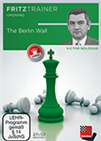 On top level the Berlin Defense is a popular defensive weapon but it also offers Black good chances to win if White does not proceed precisely. On this DVD Victor Bologan shows what Black can and should do if White tries to avoid the main lines of the Berlin Defense.
On top level the Berlin Defense is a popular defensive weapon but it also offers Black good chances to win if White does not proceed precisely. On this DVD Victor Bologan shows what Black can and should do if White tries to avoid the main lines of the Berlin Defense.Thanks to IM Ris' words over learning rook endgames in order to improve, I found some interesting positions, which are not difficult, but in my opinion, give the idea of the work we need to do ourselves in order to achieve rook endgames mastery.
This is another position one should master, to gain an understanding of what the rooks can do.
The first four chapters are made up of 30 positions, analysed in details. Some are analysed for few pages, and some lighty to just focus on the ideas one should learn.
Chapters five and six are devoted to tactical play, which is a fundamental knowledge for each club player. Ris smartly doesn't care to compete with the tons of tactical tools we have nowadays online, instead, he focuses on the thought process, which in my opinion is often neglected, and can give real improvements. Inside these chapters, you'll find different themes which belong to each game like: vulnerable pieces, determining all possible targets, how to create threats, pawn play, lack of harmony, creative thinking, etc., all with a wealth of examples.
Chapters seven through nine are dedicated to middlegame strategy. Chapter seven begins with the famous quote from Tarrasch:
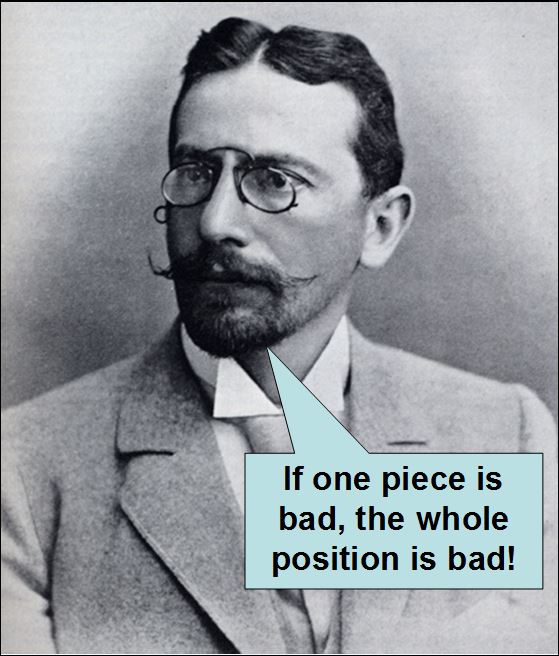
The theme of the chapter is how a piece with few squares affects the game, many examples from classical and modern times are shown.
Chapter eight is a continuation of chapter seven, now we have good pieces... but bad squares!
Chapter nine deals with a misconception many club players have. They are able to create their plans, but often fail to take into account their enemy plans. The goal of this chapter is to teach us how to play against the enemy pieces, and land them in a worse position than ours.
The book ends with a chapter of exercises, 32 positions, which test our understanding of the material studied.
Pro and cons
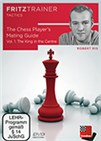 One of the first lessons you learn in chess is to bring your king into safety by castling – be it on the kingside or the queenside - after having developed your minor pieces. By ignoring this rule of thumb, not only may your king end up in trouble, but your other pieces and in particular, your rooks, may never end up playing much of a role, and before you know it, things are looking grim. Even at the highest level, the consequences of neglecting this basic element of opening theory has been frequently underestimated. In this first volume of the new Mating Guide series, the emphasis will be on how to exploit a vulnerably placed king in the centre. A must-have for ambitious chess players who want to improve their own attacking skills.
One of the first lessons you learn in chess is to bring your king into safety by castling – be it on the kingside or the queenside - after having developed your minor pieces. By ignoring this rule of thumb, not only may your king end up in trouble, but your other pieces and in particular, your rooks, may never end up playing much of a role, and before you know it, things are looking grim. Even at the highest level, the consequences of neglecting this basic element of opening theory has been frequently underestimated. In this first volume of the new Mating Guide series, the emphasis will be on how to exploit a vulnerably placed king in the centre. A must-have for ambitious chess players who want to improve their own attacking skills.I don't wholly agree with the position taken in the beginning by Ris, on page six when he writes:
"It has always surprised me that most people of this particular group of ambitious amateurs associate chess improvement with working on openings."
And he continues with:
"After all everybody is able to learn 25 moves of opening theory by heart and spoil a brilliant opening preparation with a mistake on move 26, wasting all the efforts..."
Why do I disagree? I'm in the 1500-2200 range (around 1900) and I'm not able to learn 25 moves of theory. I don't really know who does, because most of the time by move 10, with the opponents I meet in tournament, we are already out of theory. Always by move 10-15 the game is often decided if one of the two didn't fight correctly for the center. The game wasn't doomed because we made a tactical blunder, but because one of the two has gained a decisive space advantage. Then it's question of technique, waiting the side with less space to blunder.
However, here is where things become funny, and I feel like a politician who is able to say two opposite things in the same sentence... I do agree with Ris, because I have studied for a tournament only endgames, no openings, and amazingly I had a positive result (5th at the State Championship in a very tough section and most games were won in the endgame). But again the situation is not so black and white. Today many kids are playing in open tournaments. Many of these kids are kind of future professionals or nearly master level players even though they are just 10-12 years old! They do study the openings a lot, and it is impossible to beat them in the opening phase of the game. Often they gain material in that phase, I'm speaking from personal experience... BUT (notice the BIG 'but'...) if as adults we are able to bring these future master level players in the endgame, often I've seen them losing or drawing a won game.
Recently, especially in the Chessbase DVDs, I've noticed the trend of some authors for showing all the game, implying we do need to study the opening, but we also need to know in which type of endgame that opening will bring us.
Another GM, the author of an interesting chess book, also made me think upon this particular issue. He said to ask ourselves a question: "Why are we training?" If the answer is, for the next tournament, and the next tournament is just two weeks away, then to study the endgames it's not so useful. In his opinion, one takes two to three months of sustained study effort in order to study the endgames, and gain benefits from such study. The above mentioned GM is quite sure about the need of those months of endgame studying in order to become a better player. Hence if one person tells us one thing, maybe we can discount it, and not take it seriously. But if professional after professional gives us the same advice, then it would be foolish not to listen. We need to decide to invest the time, and ingest such bitter pill, which means find a way to motivate ourselves for the next three months to learn the endgames, and do it thanks to a book like this one, which doesn't show all the endgames which can be played, but only those we really need as club players competing in tournaments.
Then there is another interesting issue, which is not directly related to the book, but which must be addressed. I like to write reviews which help my fellow chess players on the road to mastery to actually improve. Ris provided us with the right material, but how do we learn it? How do we know just being exposed once to it will work? I don't believe one time is enough. Once I was listening to GM Yermolinsky, and I understood he also took a giant leap in improvement because he studied endgames with a partner. Maybe the way to improve is to find someone to study them, using this book as a guide.
Since I'm an adult, and it is difficult to find a study partner, then the study partner becomes the computer! How? Well, I began to insert the positions of this book inside my Chessbase 14, and then when I want to practice I click on 'play against Fritz', and it brings me to my online account. However, if one doesn't have an online account, the database can be read by Komodo or Houdini with the Fritz GUI, so one opens the DB, and play it against those engines.

Fritz online is part of your free ChessBase account!
Final thoughts
When we are desperate for improving our chess we generally take lessons from titled players. Often such lessons cost $70-100 per hour. But in the end, we discover there was no magic secret, and many GMs are just conveying us endgame skills. In fact, a friend of mine, with whom I study on Sundays, began to take lessons from a GM, and the GM followed the same path just mentioned above, already on the second lesson he was presenting him many endgame positions.
I'm neither rich, nor poor, just middle-class, but if at the end of the day the key to improvement, as Robert Ris declares on page nine of his book, is mastering rook endgames, then why not doing it with a book, whose cost is less than $30, compared to maybe 10 lessons from a GM for $700?
Some people believe computers will teach them chess, that is not going to happen. Computers can be sparring partners. They can even find the right moves for both sides, and make us see the correct path. Our minds are formed by language, so the only way to grow in chess is through another human being sharing his ideas on the game, and how should be played. IM Ris is the right coach in this sense. The wise words he uses in this book will resonate and stay with us during our tournament games, making this book the right way to go if we care to improve our game. I will surely study this book for the next five or six months, while eagerly waiting for volume 2!
Links
